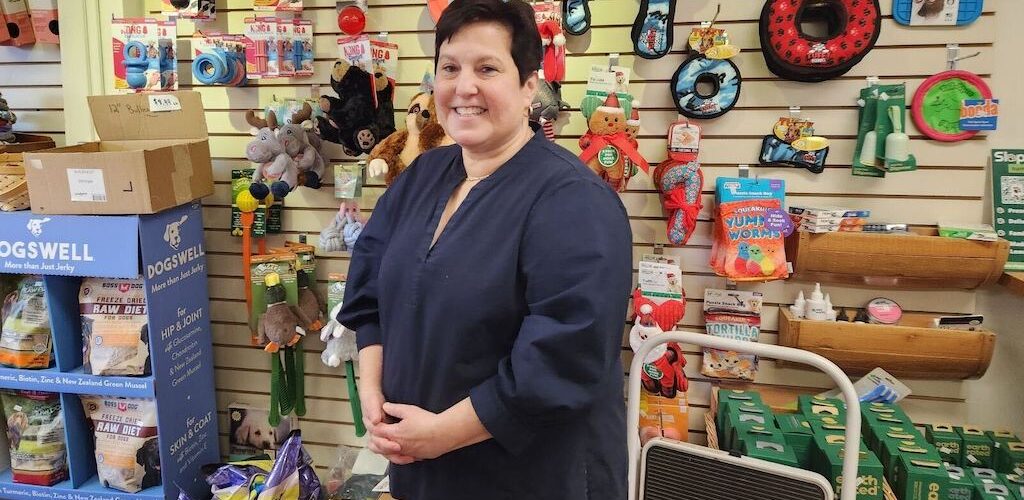Millions will see rise in health insurance premiums if federal subsidies expire • Daily Montanan
January 4, 2025

- Factbox-Insurance industry stares at potential record-breaking losses from Los Angeles wildfires
- Lawmakers take on prior authorization reform as health insurance frustrations mount | US healthcare
- Marsh McLennan acquires Long Island insurance agency
- Affordable Care Act Insurance Open Enrollment Still Available: What to Know
- What California’s Fires Mean for the Insurance Industry
Andrea Deutsch, the mayor of Narberth, Pennsylvania, and the owner of a pet store in town, doesn’t get health care coverage through either of her jobs. Instead, she is enrolled in a plan she purchased on Pennie, Pennsylvania’s health insurance exchange.
Bạn đang xem: Millions will see rise in health insurance premiums if federal subsidies expire • Daily Montanan
Deutsch, who has been mayor since 2018, is paid $1 per year for the job. Her annual income, from Spot’s – The Place for Paws and her investments, is about $50,000. The 57-year-old, who is diabetic, pays $638.38 per month for health care coverage — about half of the $1,272.38 she’d owe without the enhanced federal subsidies Congress and the Biden administration put in place in 2021.
But that extra help is set to expire at the end of 2025. It would cost an estimated $335 billion over the next decade to extend it — a step the Republican-controlled Congress and the Trump administration are unlikely to take as they seek budget savings to offset potential tax cuts.
You try not to go bankrupt by the end of your life.
– Andrea Deutsch, mayor of Narberth, Pa.
States say they don’t have the money to replace the federal aid. In Pennsylvania, for example, doing so would take about $500 million per year, according to Devon Trolley, the executive director of the state’s exchange.
“That is a significant amount of money, an insurmountable amount of money,” Trolley said.
The disappearance of the federal help would make coverage unaffordable for millions of Americans, including Deutsch. She said it would be a struggle to pay double what she is paying now.
“You try not to go bankrupt by the end of your life,” Deutsch told Stateline. “You need assets to take care of yourself as you get older and to have a little bit of security.”
Enhanced subsidies
Xem thêm : N.J. reports record 450K health insurance shoppers to date as eligibility for coverage expands
The 2010 Affordable Care Act included some subsidies to help people purchase health insurance on the exchanges created under that law. Under the enhanced subsidies that started in 2021, some people with lower incomes who qualified for the original subsidies have been getting bigger ones. And those with higher incomes, who wouldn’t have been eligible for any help under the original rules, are now receiving assistance.
Thanks to the enhanced subsidies, people making up to 150% of the federal poverty level, or $22,590 for an individual, are now getting free or nearly free coverage. And households earning more than four times the federal poverty level, who didn’t qualify for subsidies before, are getting some help.
The enhanced aid also has helped push ACA marketplace enrollment to record levels, reaching more than 21 million this year. Southern states that have not expanded Medicaid as allowed under the ACA have seen the most dramatic growth in marketplace enrollment since 2020, according to KFF, a health policy research organization. The top five states with the fastest growth are Texas (212%), Mississippi (190%), Georgia (181%), Tennessee (177%) and South Carolina (167%).
If the enhanced subsidies go away, premium payments will increase by an average of more than 75%, according to KFF. Some people, like Deutsch, would see their payments double.
Given those premium hikes, millions of Americans would no longer be able to afford the coverage they’re getting on the exchanges, according to the nonpartisan Congressional Budget Office. CBO estimates that enrollment would drop from 22.8 million in 2025 to 18.9 million in 2026 to 15.4 million in 2030. Some of those people would find coverage elsewhere, but others would not.
Edmund Haislmaier, a senior research fellow at the conservative Heritage Foundation, said Republicans view the expiration of the enhanced subsidies as “an opportunity to rework and address some of the basic flaws in the ACA.”
Before the ACA, Haislmaier said, many self-employed people, such as small-business owners and freelancers, were able to find their own private insurance at competitive prices. But the health care law destroyed that market, he said, leaving such people with a selection of expensive and subpar plans.
Haislmaier said it would take time for the Trump administration to determine how it wants to change the ACA — which President-elect Donald Trump unsuccessfully tried to repeal during his first term — but that “you can do that in a way that preserves access and preserves subsidies for the lower-income people who were the primary focus of the ACA.”
States’ limitations
But Jared Ortaliza, a research associate at KFF, said letting the enhanced subsidies expire could result in higher premiums for everyone. That’s because higher prices likely would prompt many healthier people to forgo insurance, he said. Their departure would leave only chronically ill people on the exchanges, and the cost of their care is higher.
Xem thêm : Deion Sanders shares insurance policies for Shedeur, Travis Hunter ahead of Alamo Bowl
“If sicker enrollees need coverage because they need care, they’ll still choose to buy it, potentially. And if the market were sicker as a whole, that could drive premiums upward as well,” Ortaliza told Stateline.
Ortaliza said states might consider keeping premiums down through so-called reinsurance, or reimbursing insurers for their most expensive enrollees. Theoretically, they also could try to replace the expiring federal aid with their own money.
But few if any states have the financial flexibility to do that, said Hemi Tewarson, executive director of the nonpartisan National Academy for State Health Policy.
“There might be a couple states who don’t have current state subsidies that might add that, but that will be very nominal,” Tewarson told Stateline, adding that officials from different states have been discussing potential solutions. “They are all assuming that they would just have to absorb the loss of coverage across the population.”
Trolley, the head of the Pennsylvania exchange, said her state is working to provide its own subsidy to make the marketplace plans even more affordable. But even when fully implemented, it would spend only $50 million on that help, a tenth of what it would need to replace the federal aid.
Two-thirds of the 435,000 Pennsylvanians who purchase insurance on the marketplace joined after the enhanced federal subsidies were put in place in 2021. If they expire, Trolley said, she worries that 100,000 or more exchange participants will leave.
Jessica Altman, executive director of California’s exchange, said her state is in a similar situation. California currently receives $1.7 billion annually in enhanced subsidies from the federal government and spends an additional $165 million of its own money to keep costs down.
California estimates that if the subsidies expire, monthly premiums for the state’s enrollees would increase by an average of 63%. More than 150,000 people would no longer be eligible for federal help, and between 138,000 and 183,000 would disenroll, the state estimates.
This story was originally produced by Stateline which is part of States Newsroom, a nonprofit news network, including the Daily Montanan, supported by grants and a coalition of donors as a 501c(3) public charity.
Nguồn: https://propertytax.pics
Danh mục: News
